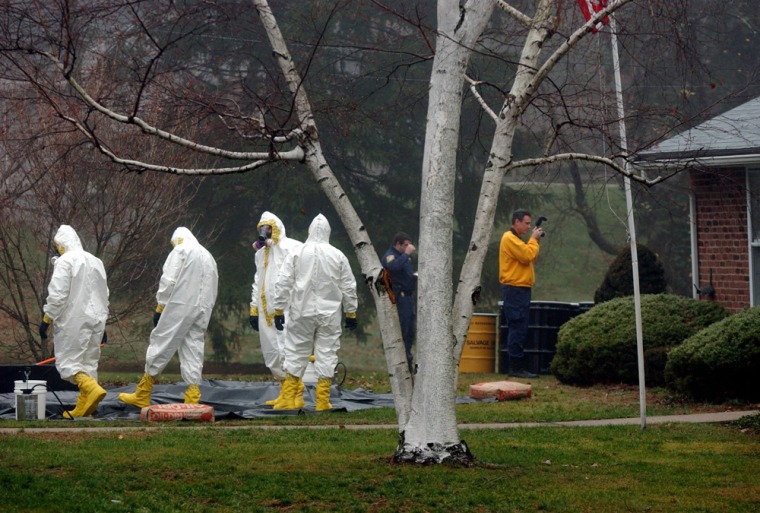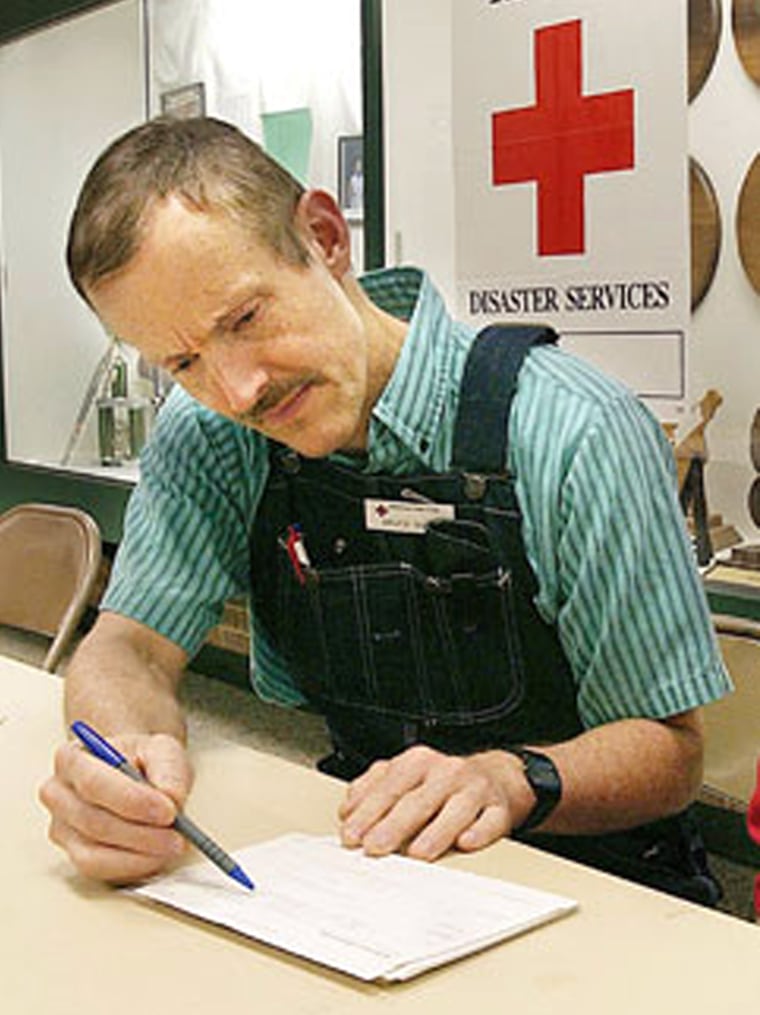Scientific evidence alone cannot lead to a definitive conclusion about the origins of the anthrax sent through the mail that infected 22 people, killing five of them, a panel of scientists asked to examine some of the FBI's work in investigating the 2001 anthrax attacks said Tuesday.
The scientific link between the anthrax in the letters and a flask in the laboratory of the government scientist blamed by the FBI for carrying out the attacks "is not as conclusive as stated" in the Justice Department's summary of the investigation, the scientists said.
Their assessment was contained in a National Academies of Sciences review of the FBI's scientific methods used in the anthrax investigation.
"We find the scientific evidence to be consistent with their conclusions but not as definitive as stated," said Lehigh University President Alice P. Gast, who chaired the 16-member panel.
In response, the FBI said it "has long maintained that while science played a significant role, it was the totality of the investigative process that determined the outcome of the anthrax case."
Dozens of other pieces of evidence, the FBI said, led it conclude that the attacks were carried out by Dr. Bruce Ivins, a government scientist at Fort Detrick who committed suicide in 2008 by taking a Tylenol overdose as the FBI was closing in on him. He had denied involvement, and his lawyer and some colleagues have maintained he was an innocent man hounded to self-destruction.
The flask of highly concentrated anthrax spores controlled by Ivins "was not the immediate, most proximate source of the letter material," the scientists said. And if the anthrax did come from the flask, "then one or more separate growth steps, using seed material" from the flask "followed by purification would have been necessary."
"We've always assumed there were subsequent steps to turn that liquid anthrax into powdered spores," a senior FBI official said after the report was released.
In many respects, the report reached the same conclusions as the FBI about the nature of the anthrax sent through the mail. For example, the powder was not "weaponized" or coated with any material to make it more likely to float in the air, the scientists concluded.
But the scientists disputed a statement by the Justice Department that "the anthrax mailer must have possessed significant technical skill."
It's not possible, the panel said, to know what skills were required, because it isn't known how the powdered spores were produced. The time required "might vary from as little as two to three days to as much as several months."
While the scientists say the FBI overstated the connection between the anthrax in the mailings and the flask in the laboratory of Dr. Ivins, they also said the results of tests performed by the FBI "were consistent with" the government's findings.

The FBI's conclusion that Dr. Ivins carried out the attacks was based on several factors independent of the science. For example, investigators found that his after-hours use of the lab spiked in September and October 2001, just before each of the anthrax mailings.
The letters were placed in a mailbox in Princeton, N.J., near the office of a sorority, Kappa Kappa Gamma, with whom the FBI said Ivins had a 40-year obsession.
The FBI also said that two of the letters, sent to Tom Brokaw at NBC and the New York Post, contained certain characters written in bold that constituted a hidden code.
A week after agents first searched his house, the FBI said, Ivins threw out a book about codes that discussed using bolded letters to embed messages. Agents said he came out in his long underwear at 1 a.m. the night his garbage was collected to make certain the trash containing the book about codes was hauled away.
Early last year, the FBI formally closed its investigation into the anthrax letters, which unnerved a nation still reeling from the 9/11 attacks, saying it had concluded that Ivins planned and executed the mailings by himself.
Five people died in October and November 2001 from anthrax inhalation or exposure linked to the letters. They were a Florida photo editor, two postal workers in Washington, a hospital employee in New York City and a 94-year-old woman in Oxford, Conn. Seventeen others were sickened.
This article contains reporting from The Associated Press.
